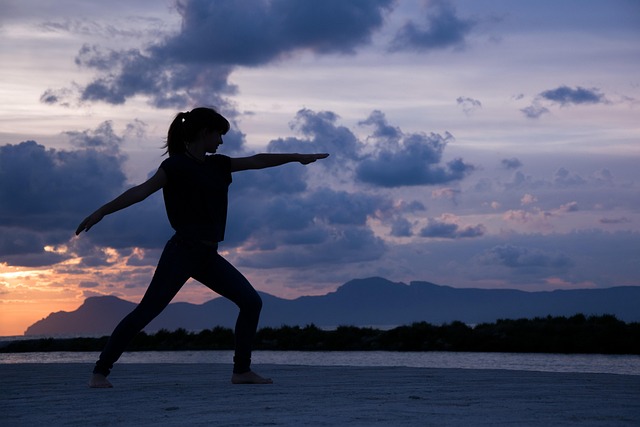
Table of Contents
Introduction: A Path Rooted in Tradition.
In the ever-evolving world of modern yoga, Ashtanga Yoga stands firm as a deeply structured and transformative path. It is a disciplined and physically intense practice, anchored in ancient wisdom and designed to purify both body and mind. Unlike casual yoga classes, Ashtanga demands dedication, patience, and presence—but offers unmatched rewards: strength, focus, resilience, and inner clarity. Whether you’re seeking physical vitality or spiritual growth, Ashtanga Yoga lights the fire within and guides you toward mastery.
What is Ashtanga Yoga?
Ashtanga Yoga is a dynamic style of yoga developed by Sri K. Pattabhi Jois in the 20th century, based on the ancient text Yoga Korunta. The word “Ashtanga” means “eight limbs” in Sanskrit, referring to the eightfold path of yoga outlined in Patanjali’s Yoga Sutras. This holistic path includes ethical disciplines, postures, breath control, and meditation techniques aimed at self-realization.
As a physical practice, Ashtanga follows a set sequence of poses performed in a flowing style, synchronized with the breath (vinyasa), internal locks (bandhas), and focused gaze (drishti). It’s meditative, rigorous, and deeply purifying.
The Eight Limbs of Ashtanga Yoga:
These foundational limbs serve as a complete roadmap for yogic living:
- Yama (Ethical Restraints): Non-violence, truthfulness, non-stealing, continence, non-possessiveness.
- Niyama (Personal Observances): Cleanliness, contentment, self-discipline, self-study, surrender to a higher power.
- Asana (Postures): Physical poses to build discipline and health.
- Pranayama (Breath Control): Mastery of life force through breath regulation.
- Pratyahara (Withdrawal): Turning inward by detaching from the senses.
- Dharana (Concentration): Focusing the mind on one object or point.
- Dhyana (Meditation): Deep, uninterrupted meditative absorption.
- Samadhi (Enlightenment): The ultimate union with the Self or Divine.
Structure of Ashtanga Practice:
Ashtanga Yoga is built on six series, each increasing in difficulty and intensity:
- Primary Series (Yoga Chikitsa) – Yoga Therapy: Aligns and detoxifies the body.
- Intermediate Series (Nadi Shodhana) – Nerve Cleansing: Purifies the nervous system.
- Advanced A, B, C, D (Sthira Bhaga) – Strength & Grace: Demands exceptional control and strength.
Most practitioners spend years mastering the Primary Series before progressing. The sequences are traditionally learned under the Mysore-style teaching method, where students memorize the series and practice at their own pace under a teacher’s guidance.
Key Components of Ashtanga Practice:
- Vinyasa: Breath-synchronized movement that links poses fluidly.
- Tristhana: The “three places of attention” – posture (asana), breath (ujjayi), and gaze (drishti).
- Bandhas: Energy locks that stabilize the core and channel inner energy.
- Drishti: Specific gazing points to enhance concentration and mindfulness.
These components work together to build internal heat (tapas), cleanse toxins, and sharpen mental focus.
Benefits of Ashtanga Yoga:
- Builds Physical Strength and Flexibility
Each session requires consistent movement through postures that enhance core power, tone muscles, and stretch deeply. - Enhances Mental Discipline
The repetition and order of the practice foster discipline, commitment, and mental resilience. - Purifies the Body Internally
Sweat generated through the practice helps detoxify the organs, improve digestion, and boost immunity. - Deepens Self-Awareness
With consistent focus on breath and movement, practitioners develop profound mind-body awareness and emotional balance. - Supports Weight Loss and Cardiovascular Health
The rigorous nature of the series elevates the heart rate and burns calories, aiding fat loss and circulation. - Nurtures Spiritual Growth
Through its eightfold path, Ashtanga encourages introspection, meditation, and a connection to the Self.
Who Should Practice Ashtanga Yoga?
Ashtanga is well-suited for those who:
- Thrive on structure and repetition.
- Seek a physically demanding, transformative experience.
- Are open to learning under a teacher over time.
- Wish to combine spiritual depth with physical vitality.
Beginners can start too—but it’s important to begin slowly, perhaps under a trained teacher or through modified versions of the Primary Series.
What to Expect in an Ashtanga Class:
In a Led Class, the teacher guides everyone through the same sequence at the same pace.
In Mysore Style, students move independently at their own rhythm, under observation and personalized instruction. Expect to sweat, be challenged, and feel deeply connected to your body and breath. Unlike drop-in vinyasa classes, Ashtanga is a daily discipline, traditionally practiced six days a week with rest on full/new moons and Sundays.
Tips for Beginners:
- Don’t Rush: Master each pose and transition slowly.
- Focus on Breath: Ujjayi breathing is central to the flow.
- Use Props If Needed: Support yourself while learning alignment.
- Practice Patience: Progress is slow but deeply rewarding.
- Find a Qualified Teacher: A knowledgeable guide ensures safe and correct practice.
Common Asanas in the Primary Series:
- Sun Salutations A & B (Surya Namaskar) – Warm-up sequences.
- Padangusthasana & Padahastasana – Forward bends for hamstring opening.
- Trikonasana & Parivrtta Trikonasana – Standing twists.
- Utthita Hasta Padangusthasana – Balancing and flexibility.
- Marichyasana A-D – Deep hip and spine twists.
- Navasana (Boat Pose) – Core strength and stamina.
- Bhujapidasana – Arm balance challenge.
- Setu Bandhasana – Heart opener and spinal support.
- Yoga Mudra & Padmasana – Seated concentration.
- Shavasana – Final rest and integration.
Ashtanga Yoga and the Inner Journey:
Unlike modern yoga that may focus on the physical, Ashtanga embraces the complete yogic lifestyle. It’s not about mastering difficult poses—it’s about mastering the mind. The repetition of sequence, the breath discipline, and the meditative awareness slowly strip away ego, revealing clarity and inner strength.
This inner fire—Tapas—is the driving force that burns through impurities and transforms us, both physically and spiritually.

Conclusion: The Reward of Dedication!
Ashtanga Yoga is not just a workout—it’s a lifestyle of discipline, strength, and introspection. It demands effort, but in return, it offers unmatched personal growth. Whether your goal is improved flexibility, a stronger body, a calmer mind, or deeper spiritual connection, Ashtanga provides the structure and wisdom to guide you there.
When practiced consistently, it becomes a mirror—a moving meditation that reveals who you truly are. Step onto your mat. Breathe. Flow. Transform.
Practicing yoga on a daily basis not only enhances flexibility but also builds discipline. If you’re starting out, investing in a reliable and best yoga mat can make a big difference in your comfort and performance.
DISCLAIMER: This article is for informative purpose only so always consult your health practitioner before starting any routine.
